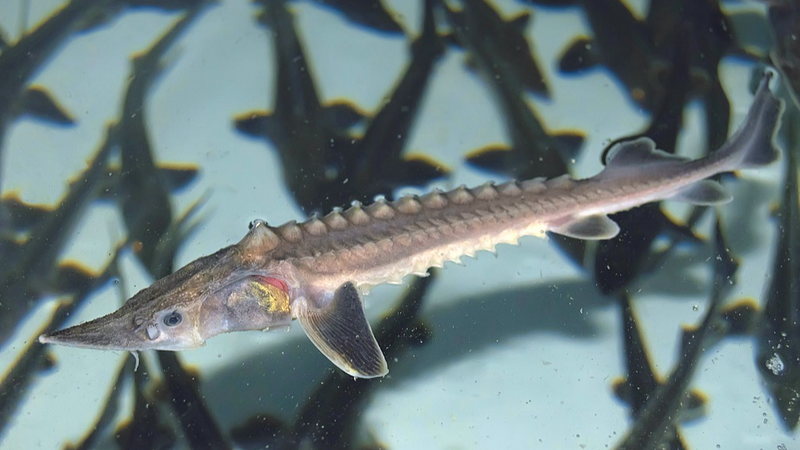In a landmark conservation victory, researchers have observed the first natural reproduction of the critically endangered Yangtze sturgeon in the wild in over two decades. A half-translucent grey larva, no larger than a grain of rice, emerged from its egg casing in the shallow waters of the Chishui River in the Guizhou Province in the Chinese mainland, signaling a turning point for this fragile species.
Led by the Institute of Hydrobiology of the Chinese Academy of Sciences and the Chinese Sturgeon Research Institute under the China Three Gorges Corporation, and organized by the Ministry of Agriculture and Rural Affairs, the team spent years developing techniques. Early trials in a side branch of the Yangtze River in the Sichuan Province in the Chinese mainland in 2023 and 2024 helped refine water flow and riverbed designs before the ambitious trial in the Chishui River.
Near Chishui City, scientists used drones, sonar and hydrological models to sculpt an 8,000-square-meter riverbed with custom channels, gravel and sand. On April 3, they released 20 adult sturgeons—10 males and 10 females—into the engineered habitat. Monitoring continued around the clock with underwater cameras and sonar.
“Within days, we saw clear signs of mating behavior,” said Liu Fei, associate researcher at the Institute of Hydrobiology. By dawn on April 13, over 200,000 fertilized eggs had been spotted in the spawning channels. On April 16, the first larvae wriggled free—proof that the Yangtze sturgeon can still reproduce in the wild.
According to Liu Huanzhang, these results confirm that mature individuals from captive-bred populations can restore wild reproduction. “This lays the foundation for a full recovery of the species in its native habitat,” he said.
The team emphasizes that saving the sturgeon is more than preserving a single species. Adult Yangtze sturgeons can exceed one meter in length, and their survival reflects the health of the entire river ecosystem. Researchers plan to monitor the young sturgeons’ growth and refine protection strategies to secure long-term recovery.
This success story offers a blueprint for restoring other endangered aquatic species and highlights the critical role of targeted habitat engineering in conservation.
Reference(s):
cgtn.com




